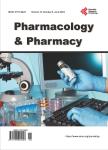A Time to Event Analysis of Adverse Drug Reactions Due to Tenofovir, Zidovudine and Stavudine in a Cohort of Patients Receiving Antiretroviral Treatment at an Outpatient Clinic in Zimbabwe
A Time to Event Analysis of Adverse Drug Reactions Due to Tenofovir, Zidovudine and Stavudine in a Cohort of Patients Receiving Antiretroviral Treatment at an Outpatient Clinic in Zimbabwe作者机构:School of Pharmacy University of Zimbabwe Harare Zimbabwe Newlands Clinic Harare Zimbabwe Department of Clinical Pharmacology College of Health Sciences Harare Zimbabwe Center of Excellence in Bioinformatics and Life Sciences and The School of Pharmacy and Pharmaceutical Sciences University at Buffalo SUNY Buffalo NY USA
出 版 物:《Pharmacology & Pharmacy》 (药理与制药(英文))
年 卷 期:2015年第6卷第3期
页 面:201-206页
学科分类:1002[医学-临床医学] 100214[医学-肿瘤学] 10[医学]
主 题:Survival Analysis Electronic Medical Records Adverse Drug Reactions
摘 要:Background: Achieving the long terms goals of antiretroviral treatment (ART) requires a careful approach during treatment initiation that takes into account patient’s psychosocial state, availability and accessibility of treatment combinations, and adherence support. Adverse drug reactions that occur during the initial phases have a bearing on treatment outcomes and thus need to be monitored and treated. Objective: This study was done to assess length of time (survival time) it took for clinically significant adverse drug reactions to occur in patients taking Nucleoside Reverse Transcriptase Inhibitors (N(t)RTI) available for treatment of Human Immunodeficiency Virus (HIV) infection in Zimbabwe. Methods: A retrospective cohort of patient data collected from January 2009 to December 2012 was extracted from an Electronic Health Record database. Data from patients who were initiated on antiretroviral (ARV) drug regimens containing N(t)RTI drugs were analysed for survival time. A sample of 205 patient files was extracted for the time period for survival analysis using adverse drug reactions due to N(t)RTI drugs. Results: After data extraction, a total of 205 patient records were used in determining the time to event analysis of ADR’s in the cohort. The age range for the patients included in the study was 9 - 76 with a mean of 41 years (s.d = 14.8). Patients initiated on stavudine had a lower survival time before a clinically significant ADR compared to tenofovir (-365 days, p-value 0.0005). Patients on zidovudine also had a less time before a significant reaction compared to those on tenofovir (-230 days;p-value = 0.008). Patients on zidovudine fared better compared to those on stavudine (-134 days;p-value 0.0005). The mean survival time was highest for tenofovir (618 days), followed by zidovudine (388 days), and then stavudine (254 days).Conclusion: Patients on tenofovir have a longer survival time before a clinically significant adverse reaction. Treatment program



